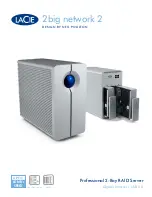
16
Cisco Small Business NSS324 and NSS326 Smart Storage
•
Obtain TCP/IP settings automatically via DHCP
—Click this
check box to acquire the IP address from a DHCP server. This is
enabled by default.
•
Click
Use the following settings
to configure a static IP
address:
-
IP Address
—Enter an IP address for the NAS.
-
Subnet Mask
—Enter the subnet mask of your network.
-
Default Gateway
—Enter the default gateway address.
This is typically the IP address of your router.
-
Primary DNS Server
(optional)—Enter the IP address of
the Domain Name System (DNS) server. This address is
typically provided by your Internet Service Provider (ISP).
-
Secondary DNS Server
(optional)—Enter a second DNS
server.
S
TEP
20
Click Next. You are redirected to a window where you can select
the services to be enabled.
S
TEP
21
Select the services to be enabled. These services can also be
enabled or disabled at a later time. The options are:
•
Network services
—Click the check box to enable Microsoft
Networking, Apple Networking, or Unix/Linux NFS.
•
File services
—Click the check box to enable Web File
Manager, FTP Service, or Download Station.
•
Multimedia services
—Click the check box to enable
Multimedia Station, UPnP multimedia server, or iTunes service.
•
Web server services
—Click the check box to enable Web
Server or MySQL server.
S
TEP
22
Click Next. You are redirected to a window where you can select
the disk configuration.
S
TEP
23
Select the disk configuration. The options are:
•
Disk configuration:
N
OTE
It is recommended to configure the NSS324 or NSS326 with
RAID 5 if there are three or more disks installed.
-
Do not set disk configuration
—If you have created disk
volume configuration or plan to create multiple disk
configurations, select not to initialize the disk drives.
-
Single Disk
—Uses the disk drives as single disk volumes.
When a drive failure occurs, all data is lost.















































